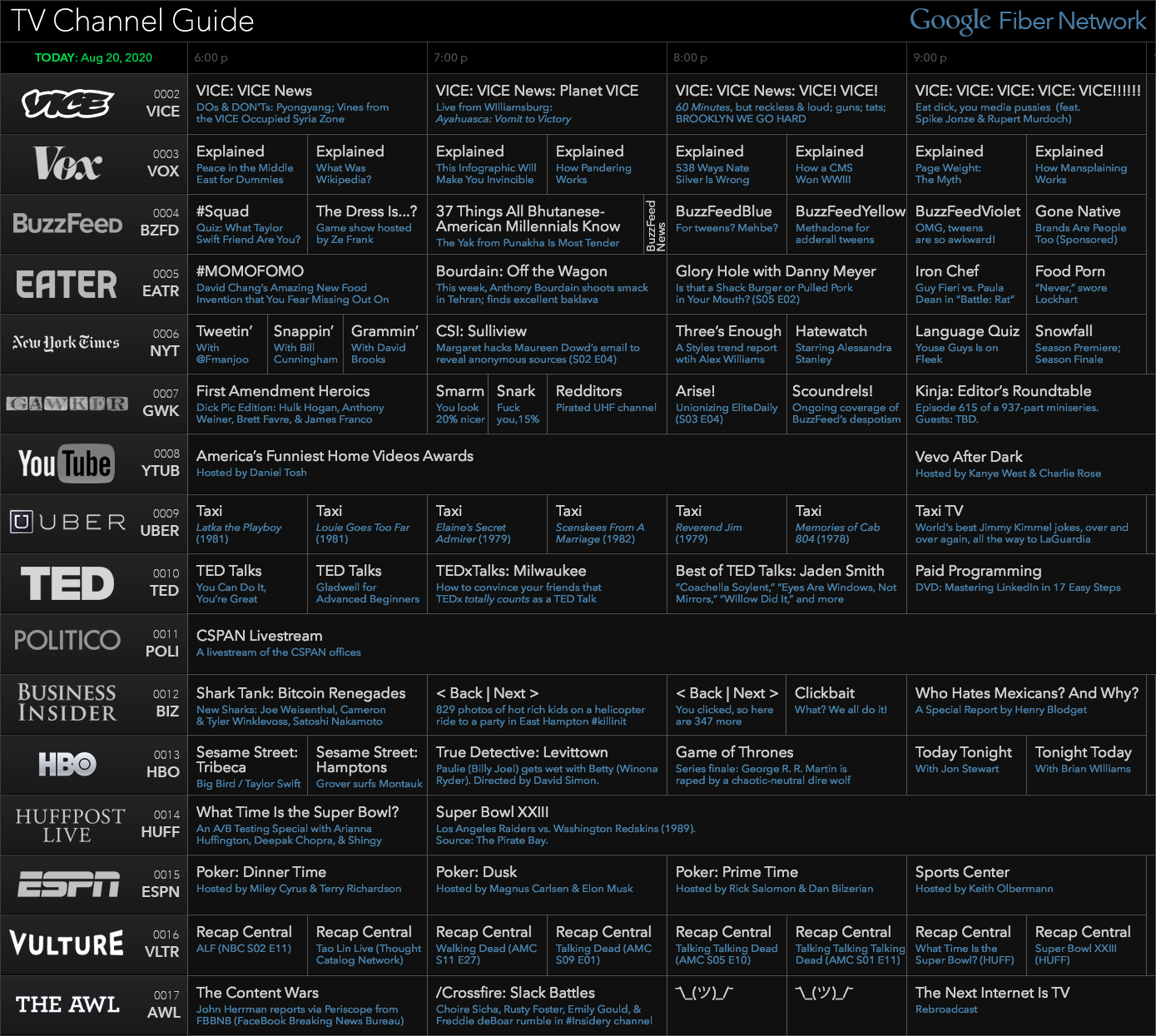The 3-Minute Rule for Apollo Group Tv
The Definitive Guide for Apollo Group Tv
Table of ContentsThe Apollo Group Tv IdeasThe 9-Second Trick For Apollo Group TvUnknown Facts About Apollo Group TvNot known Incorrect Statements About Apollo Group Tv
In this circumstance, rather than having three-minute commercial spots throughout a 30-minute television program, TV programming might change to one where a consumer will be called for to have a regular monthly subscription, so that they cen view targeted banner advertisements. This kind of advertising and marketing currently occurs on the net, and the quantity of information television companies collect permits them to do similar.Describe the significant patterns among the broadcasting and cable networks. Popular radio reveals such as cops drama Dragnet and western cowboy series Gunsmoke were adjusted for television, and new Television shows were sponsored by single advertisers, just as radio shows had actually been.
Today, the tv market is even more intricate. Programs are sponsored by numerous marketers; programs is controlled by significant media empires; and the 3 significant networks no more dominate the airwaves however rather share their visitors with many cord channels. Numerous aspects represent these trends within the industry, consisting of technological advancements, government policies, and the production of brand-new networks.

The Apollo Group Tv Statements
Even public television has ended up being based on the impact of marketing. Developed in 1969, (PBS) developed out of a record by the Carnegie Commission on Educational Television, which took a look at the role of educational, noncommercial television on society. The record recommended that the federal government financing public tv in order to offer diversity of shows during the network eraa service produced "not to market products" however to "improve citizenship and civil service (McCauley, 2003)." Public tv was likewise planned to give universal access to television for viewers in rural locations or audiences who could not pay for to spend for exclusive tv services.
The period between 1950 and 1970 is traditionally recognized as the. Besides a little part of airtime managed by public television, the 3 significant networks (called the Big 3) dominated the television sector, collectively representing even more than 95 percent of prime-time watching. In 1986, Rupert Murdoch, the head of international business Information Corp, released the Fox network, testing the dominance of the Big Three.
Targeting young and minority audiences with programs such as Buffy the Vampire Killer, Moesha, Dawson's Creek, and The Wayans Bros., the brand-new networks wanted to draw stations far from their old network affiliations. Instead than repeating the success of Fox, UPN and WB struggled to make an impact. Unable to bring in many affiliate stations, both fledgling networks got to fewer households than their larger rivals due to the fact that they were impossible in some smaller cities.
This choice led the way for the advancement of cable television motion picture channels, adding to the rapid growth of cord in the 1980s and 1990s. apollo group tv app. Further deregulation of cord in the 1984 Cord Communications Plan Act got rid of constraints on cable prices, allowing drivers to charge what they wanted for cable television services as long as there worked competition to the service (a criterion that over 90 percent of all cable markets could satisfy)
Unknown Facts About Apollo Group Tv

Having developed the very first "superstation," Turner expanded his world by starting 24-hour news network CNN in 1980. At the end of the year, 28 nationwide programming services were readily available, and the wire revolution had actually started. Over the following years, the market underwent a period of rapid development and popularity, and by 1994 customers might select from 94 fundamental and 20 premium cable services.
Figure 9 - https://www.blogtalkradio.com/apollogtv01.16 Increased competitors from cable television networks has actually caused a consistent decrease in the networks' target market scores. Throughout the 1950s, the expense of producing a single tv program increased as programs came to be longer and manufacturing expenses rose. Sponsorship on network television shifted from single sponsorship, in which a program was totally supported and created by one advertiser, to several sponsorship, in which marketers bought 1- or 2-minute areas on the program
Pick one of the Big 4 networks and print out its once a week programs routine. Enjoy the network's prime-time programs over the course of a week, noting the target market for each show.
Apollo Group Tv Things To Know Before You Buy

Straight television, usually described as traditional broadcast TV, incorporates cable and satellite tv. It's called "direct" since web content adheres to a fixed programming routine, unlike on-demand web content which the specific visitor determines to view based on their own preferences and routine. So, when you ask, "What is direct television?", think about it as the classic method of enjoying TV that has actually been around for decades.